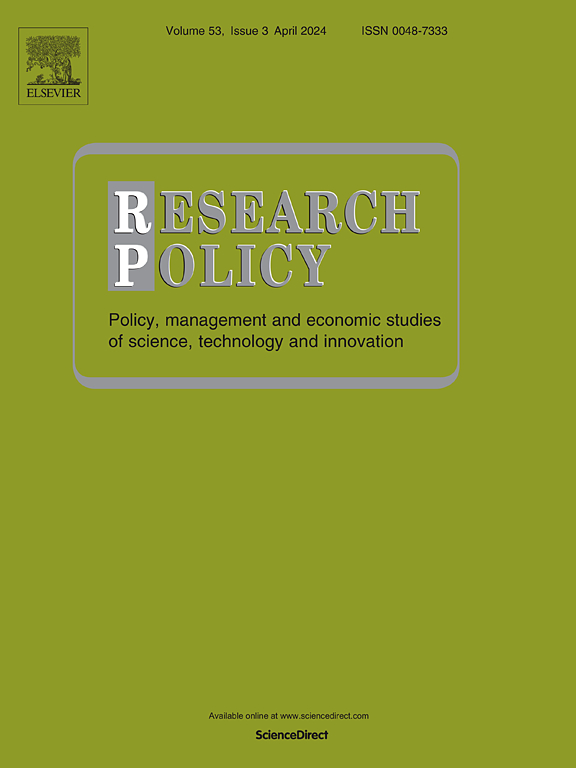China's rise as global scientific powerhouse: A trajectory of international collaboration and specialization in high-impact research
IF 8
1区 管理学
Q1 MANAGEMENT
引用次数: 0
Abstract
The recent and rapid ascent of China into today's scientific powerhouse is increasingly debated in circles of economic politics and policy making. Yet, we still know relatively little how such rise has materialized in terms of Chinese scientists' openness to international collaborations and relative focus on high-impact research, particularly in relation to the U.S. Leveraging a unique, curated database of over 25 million scientific publications from 2008 until 2020, we aim to fill this gap and empirically investigate: (1) the extent to which collaboration of China-based researchers with scientists from other countries has materialized; (2) how competition in producing high-impact research has evolved for China, especially vis-à-vis the U.S., in the global production of science; and (3) whether specialization in well-defined fields has characterized China's ascent in science and, if so, in which areas. Our findings show that China's rise as a leading player in global science has importantly built on opening its knowledge production to collaboration, both domestically and internationally. This has been paired with a remarkable focus on high-impact research. Recently, China has entirely closed the gap with the U.S. in terms of contribution to the global top 1 % high-impact scientific production, specializing in four key fields – engineering/electrical/electronic, materials science, physics, and chemistry. Our study sheds new light on the changing landscape of global scientific production and opens several avenues for future research.
中国作为全球科学强国的崛起:高影响力研究的国际合作和专业化轨迹
中国最近迅速崛起为当今的科学强国,这在经济政治和政策制定界引起了越来越多的争论。然而,就中国科学家对国际合作的开放程度和对高影响力研究的相对关注程度而言,我们仍然知之甚少,特别是与美国有关。利用2008年至2020年期间超过2500万份科学出版物的独特策划数据库,我们旨在填补这一空白,并进行实证调查:(1)中国研究人员与其他国家科学家合作的程度;(2)在全球科学生产中,中国在产生高影响力研究方面的竞争是如何演变的,尤其是与-à-vis美国的竞争;(3)明确领域的专业化是否成为中国科学崛起的特征,如果是,在哪些领域。我们的研究结果表明,中国作为全球科学领域的主要参与者的崛起,在很大程度上是建立在向国内和国际合作开放其知识生产的基础上的。这与对高影响力研究的高度关注相辅相成。最近,在工程/电气/电子、材料科学、物理和化学四个关键领域,中国对全球前1%高影响力科学产出的贡献已经完全缩小了与美国的差距。我们的研究揭示了全球科学生产不断变化的格局,并为未来的研究开辟了几条途径。
本文章由计算机程序翻译,如有差异,请以英文原文为准。
求助全文
约1分钟内获得全文
求助全文
来源期刊

Research Policy
MANAGEMENT-
CiteScore
12.80
自引率
6.90%
发文量
182
期刊介绍:
Research Policy (RP) articles explore the interaction between innovation, technology, or research, and economic, social, political, and organizational processes, both empirically and theoretically. All RP papers are expected to provide insights with implications for policy or management.
Research Policy (RP) is a multidisciplinary journal focused on analyzing, understanding, and effectively addressing the challenges posed by innovation, technology, R&D, and science. This includes activities related to knowledge creation, diffusion, acquisition, and exploitation in the form of new or improved products, processes, or services, across economic, policy, management, organizational, and environmental dimensions.
 求助内容:
求助内容: 应助结果提醒方式:
应助结果提醒方式:


